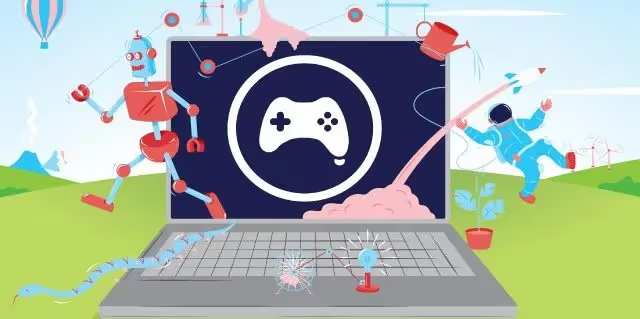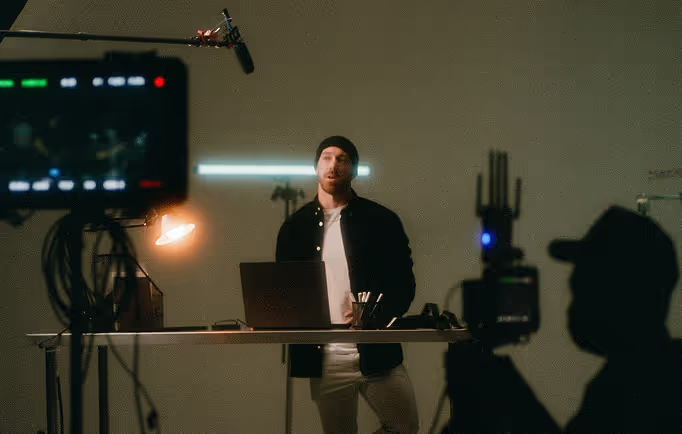How Does Animation Affect Our Daily Life?

Let’s be honest here: when someone tells me they don’t watch, don’t like, or don’t have anything to do with animation, I can’t help but look at them with a little side eye. You know, that sidelong squinty-eyed glance of distrust? Yeah. Then I feel a little bad because, hey, it’s not like everyone works as an animator, writes about animation, watches animation in their spare time, and had dreams of creating their own animated series from the age of twelve. If a person doesn’t actively seek out animated content then how can they be expected to ever appreciate it?
The truth is that animation weaves through our daily lives in more positive ways than many of us realise. Whether it’s knowingly on our televisions or behind the scenes of our social and scientific advancements, animation affects more than just those of us who work with it. Check it out:
1) animation is a trustworthy medium for education
From classic television to phones streaming curated Youtube playlists: if you grow up in a house with a screen you’re very likely to be faced with animation. A LOT of it. Japan notwithstanding, animation tends to be pigeonholed as a medium suitable only, and especially, for kids. And regardless of whether or not you agree with this idea, it does in turn has the effect of parents showing more animation television to their children, networks creating more animated children’s shows in response to demand, and kids growing up with a fond nostalgia for a medium that they associate solely with childhood fun. Trust and attention is naturally built between children and animation, in turn making it an excellent medium for early education.
2) animation helps share ideas through widely spread gifs and memes
Is there anything in our present day and age that spreads faster than a meme? Yes, a general sense of world weary cynicism, but besides that. Gifs, at one point the old-school clipart-esque joke of the internet, have in recent years become the little animated image format that could. Supported by most major social networks and sharing websites, a gif’s main purpose nowadays is virality. As Jason Eppink writes for the Journal Of Visual Culture, “a successful GIF is one that is shared, eclipsing its creator to become an essential part of a cultural conversation”.
So why, out of the many image and video formats, did the internet embrace the gif as their meme-sharing god? It seems the humble gif hits a sweet mix of 90s nostalgia, eye-catching visual media, and ultra short-form content. In other words, it’s the ideal easily consumable format for an age of wistful 90s kids who remember the early days of the internet with a heady mixture of fondness and satire.
3) animation is a vital modelling tool of modern stem fields
Beyond the scope of advertising and education, animation is used in plotting ideas, developing plans and helping predict outcomes in daily life. Just a few jobs off the top of my head which employ the services of animation to model or test ideas: architecture, civil planning, engineering of all kinds, environmental planning, urban planning, physics modelling, space exploration, real estate, meteorology, biology, medicine, forensics, aviation, and weather forecasting.
Almost anything in the fields of science, technology, engineering or mathematics can use animated models to project ideas that haven’t been constructed yet (architectural simulations, city planning, vehicle development), require exact mathematical specifications (space travel, bridge building), or would be difficult or impossible to capture on film (wind speeds and directions, molecules, crimes without video evidence).
4) animation is an approachable way to present difficult or gruesome topics
There are some things that are simply more tasteful to present in a cartoony way. Medical terms, bodily functions, even death itself can be easily abbreviated into a non-threatening icon.
Consider a video explaining the risks of heart disease. Compare presenting a drawn cartoon of a heart with an image of a real-life heart ravaged by heart disease. Yeah, pass. Hard pass.
A simpler example can be found in the humble emoji. Imagine this guy in live-action. Call me a high-class snob but pass pass pass pass pass.
5) animation helps describe big ideas in an easy-to-grasp way
It’s a point I’ve brought up before amidst singing the praises of explainer videos: animation is a great simplifier. Not to confuse simple with simplistic – making something simplistic is to underestimate the intelligence of the audience, but making something simple, something easy to understand, is an art.
Icons and graphics are used represent larger ideas very quickly, because coded visuals give our brains the information it needs based on context. A lightbulb flickering on means energy – a lightbulb above a head means an idea – a lightbulb fizzing out means our character hasn’t paid the electricity bill.
Colour symbolism can be much more easily set up and altered in digital animation than in live-action. Want to draw attention to a particular object or character? Paint them with a contrasting colour. Want an exaggerated feeling of sadness in one second flat? Your set can be blue, your text can be blue, and/or even your morose, hunched-over character can be blue. Want to contrast a number of different feelings with colour symbolism? You can do that too.
6) animation is entertaining
Pure and simple, animation is a totally unique form of entertainment. From movies, to television, to web video and games, animation provides an inspiration that live-action film cannot by presenting the impossible, the otherworldly, or the financially impractical (crowd scenes of aliens playing Quidditch with legs for arms and arms for legs, anyone? …No? Alright, but you’re missing out).
Start a






